
Austin Economy – Good Job Growth, Lower Unemployment
The Austin economy expanded in December as strong job growth and a lower unemployment rate boosted the Austin Business-Cycle Index. Recent COVID-19 hospitalizations have declined since peaking in mid-January.
Regional consumer spending has held at pre-COVID-19 levels since early December. However, existing-home sales weakened in December.
Business-Cycle Index
The Austin Business-Cycle Index—a broad measure of economic activity—expanded an annualized 14.3 percent in December. This marked the eighth consecutive month of growth, which suggests continued and steady improvement in the Austin economy (Chart 1).
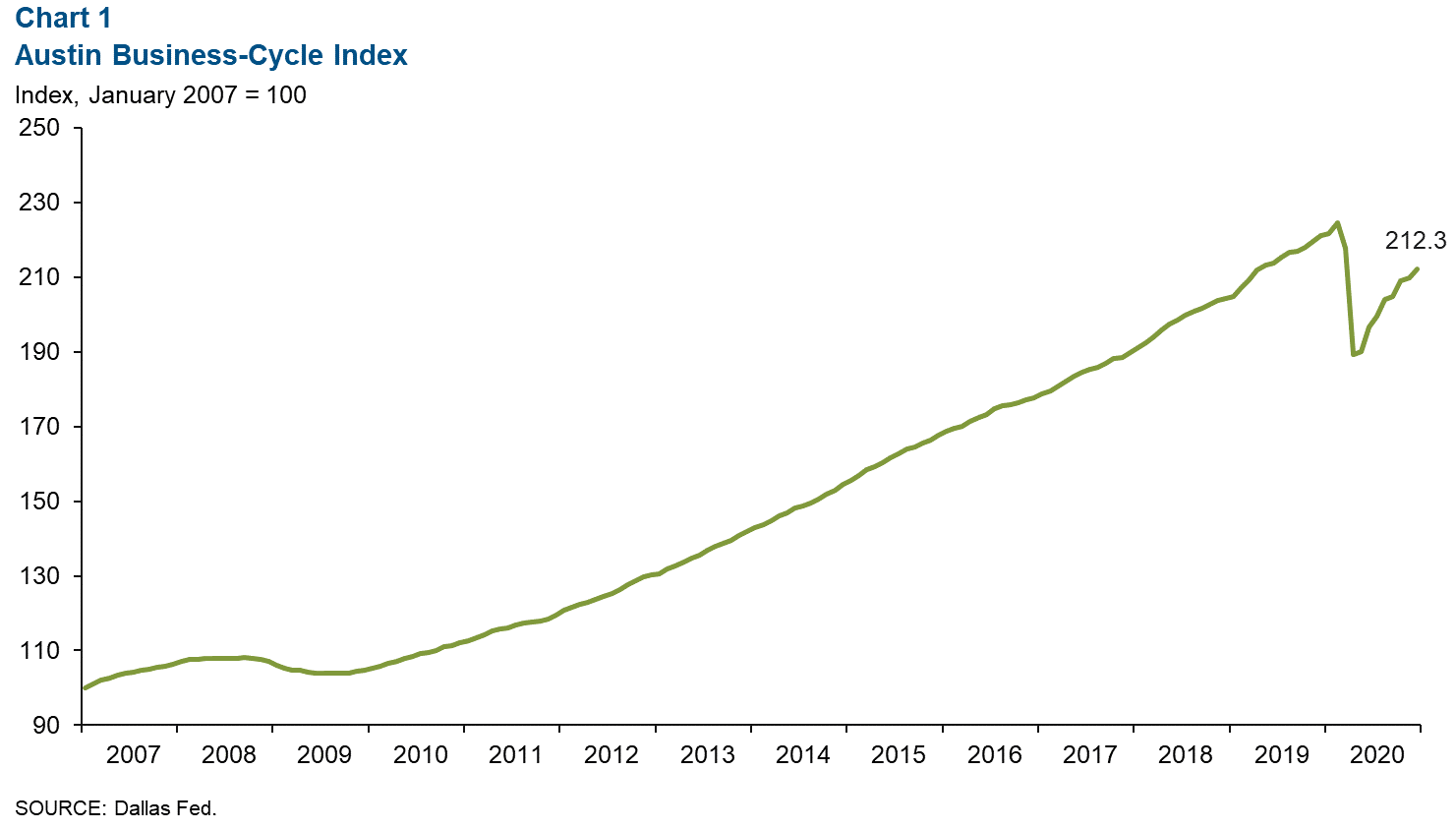
Labor Market
Unemployment Rate Declines
Austin’s unemployment rate fell to 5.7 percent in December (Chart 2). The state’s jobless rate decreased to 7.2 percent, while the nation’s remained unchanged at 6.7 percent.
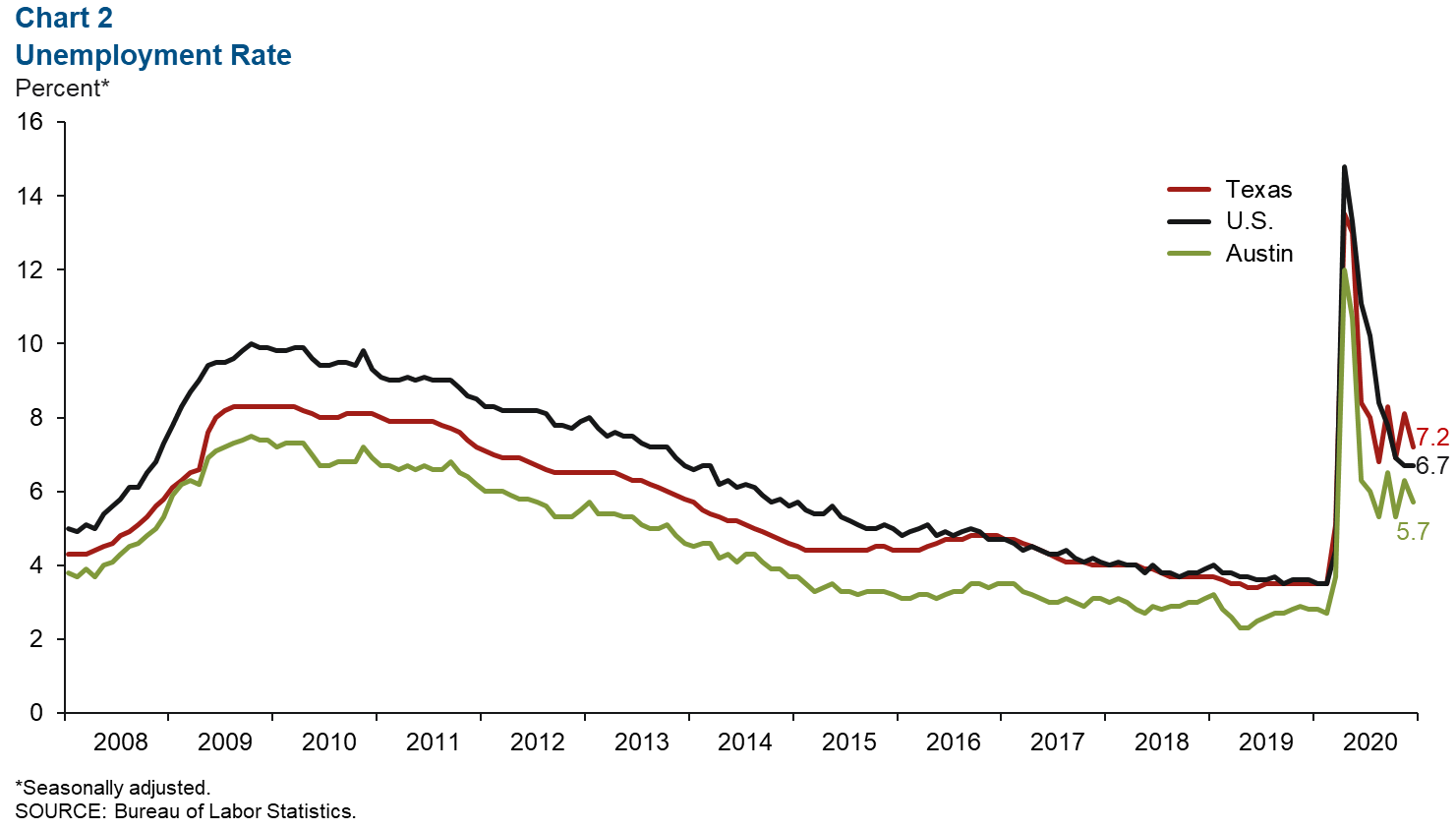
Fourth-Quarter Job Growth Positive in Most Sectors
Austin payrolls grew an annualized 8.9 percent, or by 23,210 net jobs, in the fourth quarter of 2020 (Chart 3).
Financial activities led the job expansion (30.8 percent, or 4,740 jobs), followed by manufacturing (18.7 percent, or 2,700 jobs) and construction and mining (15.9 percent, or 2,640 jobs).
The only sector that saw a contraction was government (-7.7 percent, or 3,645 jobs). While job gains have been broad based since May, they have not been large enough to offset the losses in March and April as net payrolls decreased by 34,415 in 2020.
Nonetheless, the professional and business services, financial activities, construction and mining, manufacturing, and trade, transportation, and utilities industries saw net positive growth in 2020.
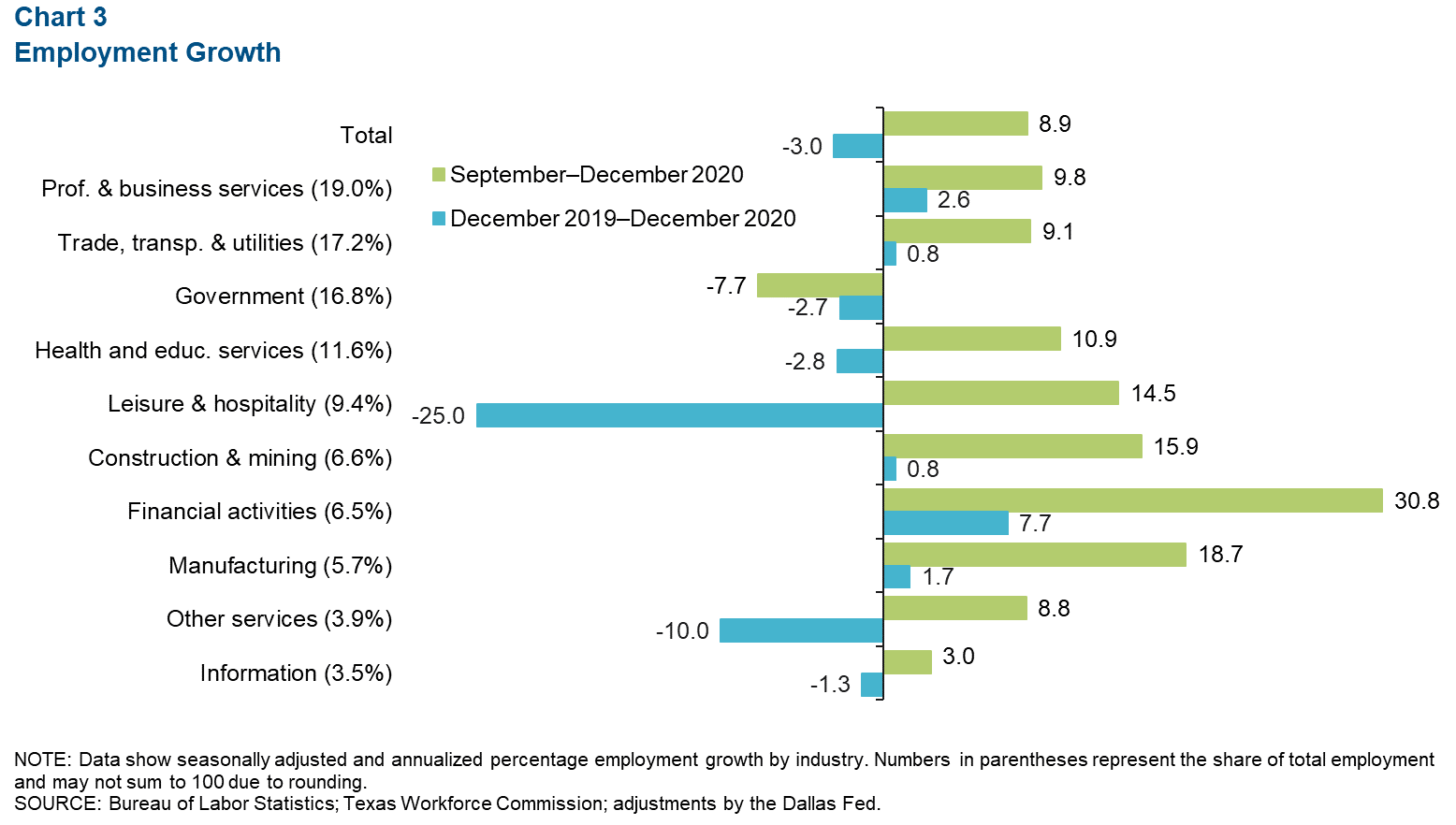
Consumer Spending
Except for a dip to sub-zero levels in late November, consumer spending (measured by credit and debit card spending) has surpassed January 2020 levels in Travis County since late July.
As of Jan. 3, 2021, spending in the county that includes Austin was up a strong 18.9 percent relative to January 2020, while spending in Texas was down 4.2 percent (Chart 4).
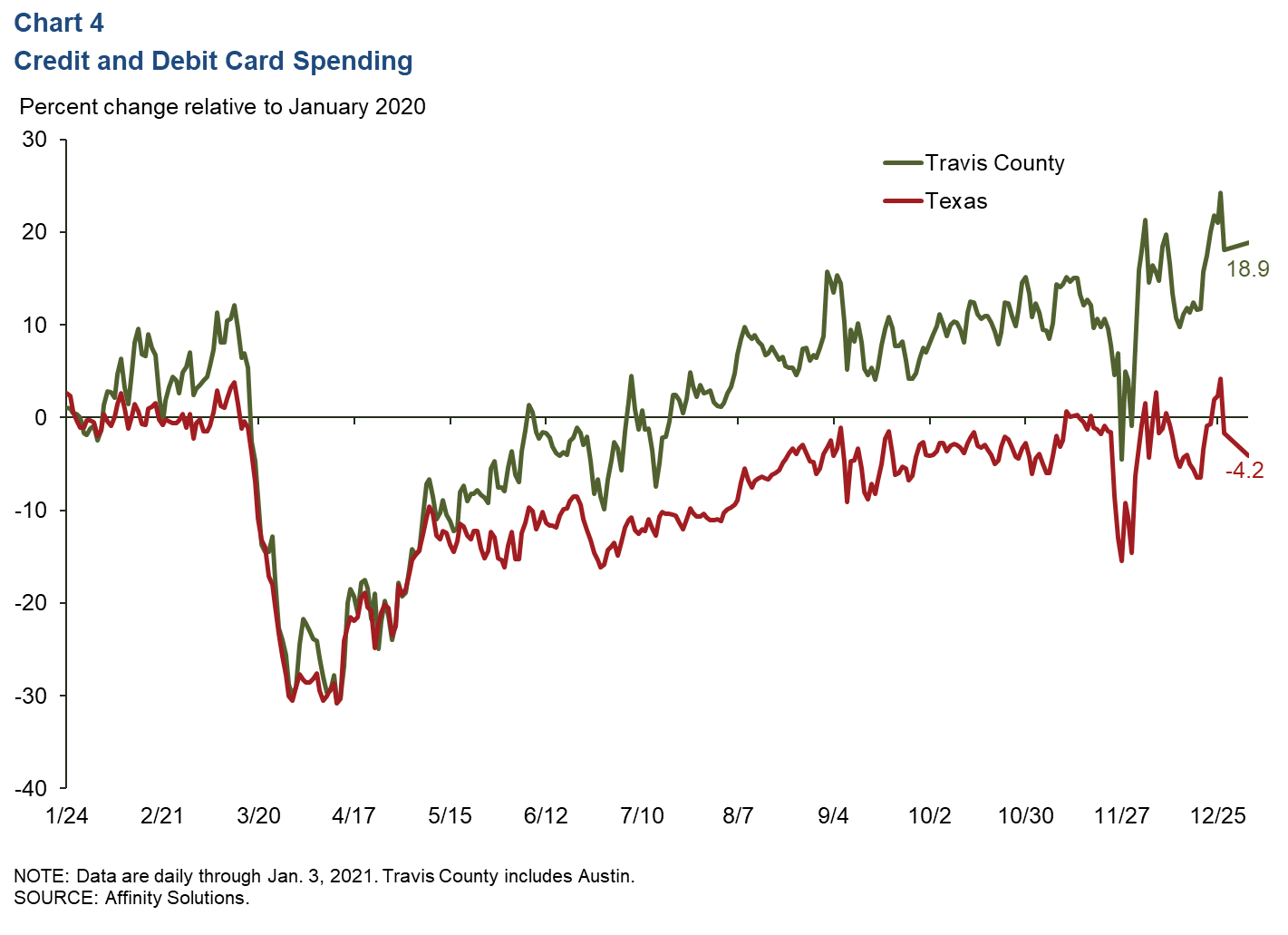
COVID-19 Hospitalizations
The number of individuals currently hospitalized with COVID-19 in Austin has trended downward since peaking Jan. 18 at 714 (Chart 5).
At the state level, the number currently hospitalized peaked January 17 at 13,977. As of January 31, 547 people were hospitalized in Austin and 11,968 in Texas.
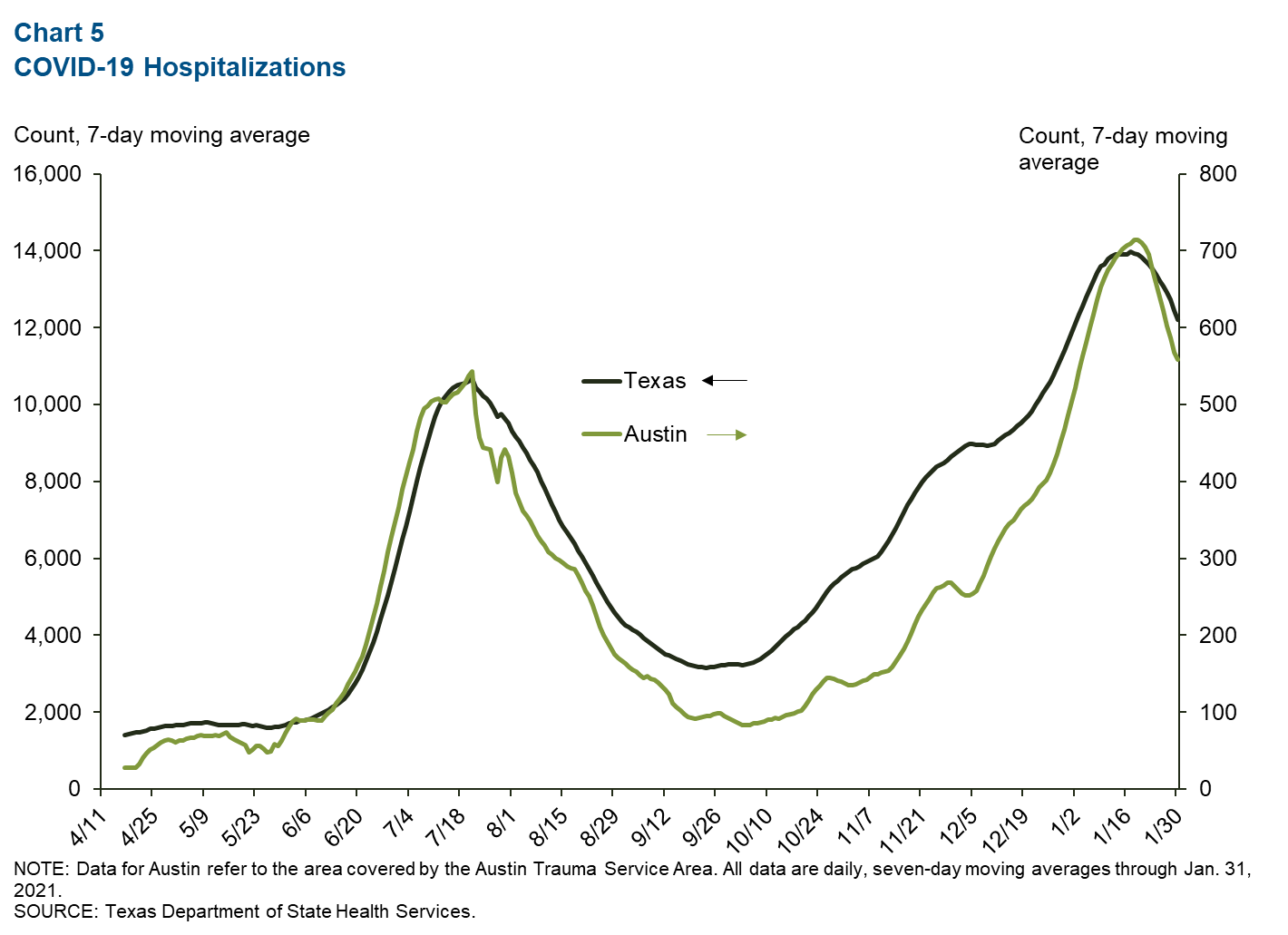
Real Estate
Existing-home sales in December declined 5.6 percent in Austin and 1.0 percent in the state (Chart 6). However, metro home sales for the year posted a strong performance—up 8.9 percent relative to 2019.
At the state level, sales were up 9.6 percent for the year. The median price of homes sold in December was $368,693 in the metro, a 13.8 percent rise year over year, compared with $268,375 in Texas, a 7.5 percent gain.
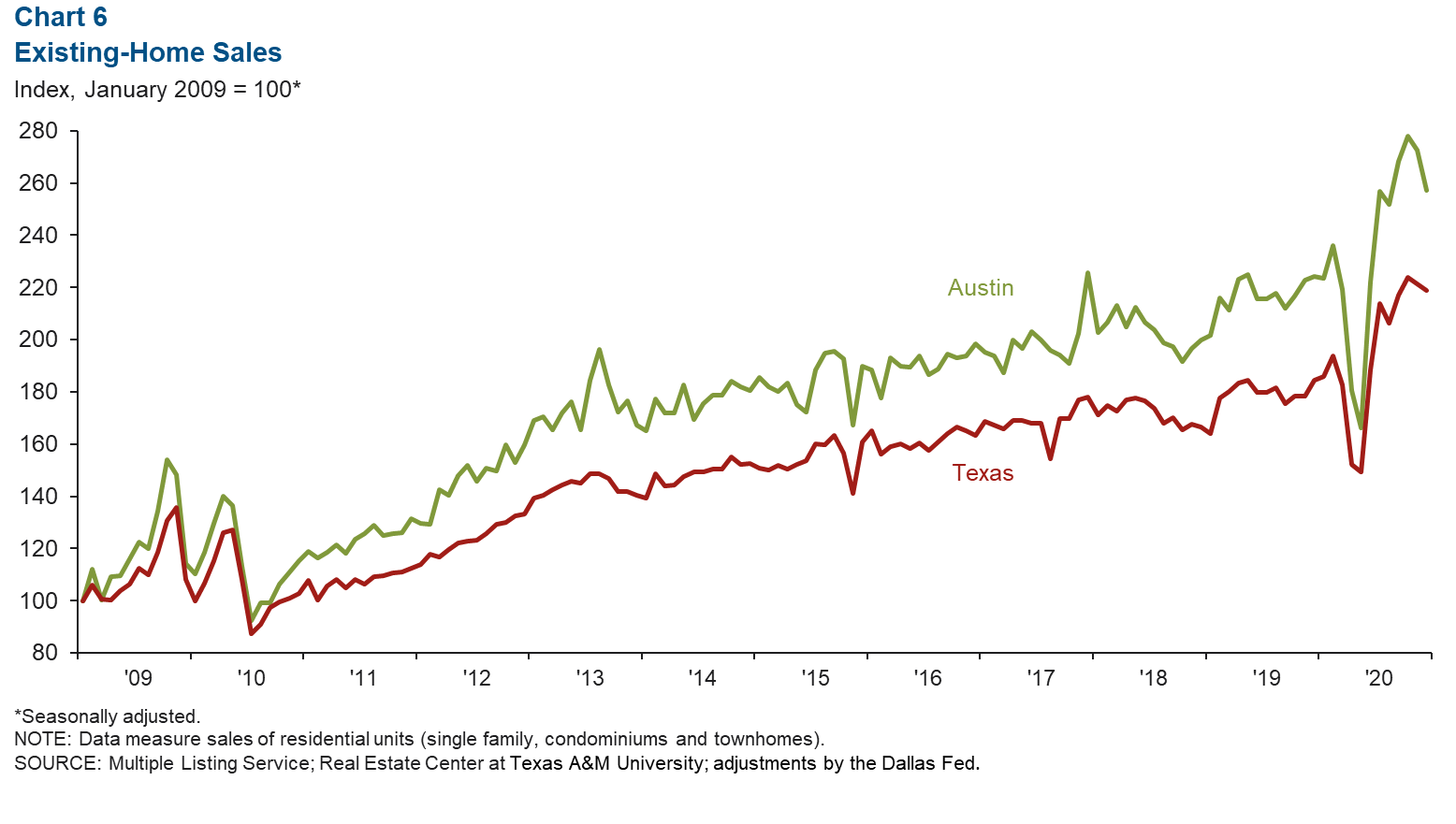
NOTE: Data may not match previously published numbers due to revisions.
Austin Economic Indicators is a report by the Dallas Federal Reserve. Questions can be addressed to Judy Teng at judy.teng@dal.frb.org.






